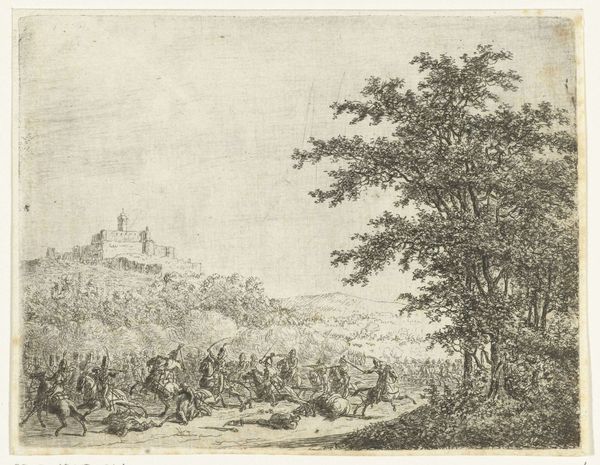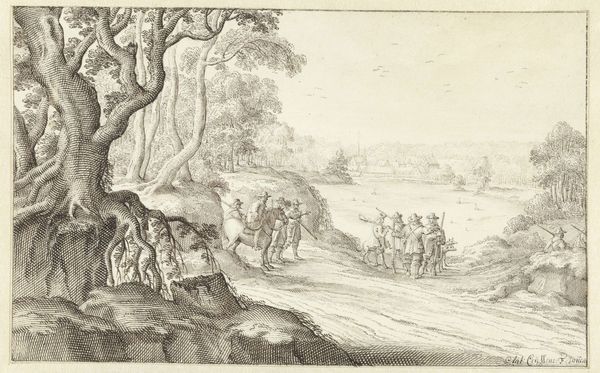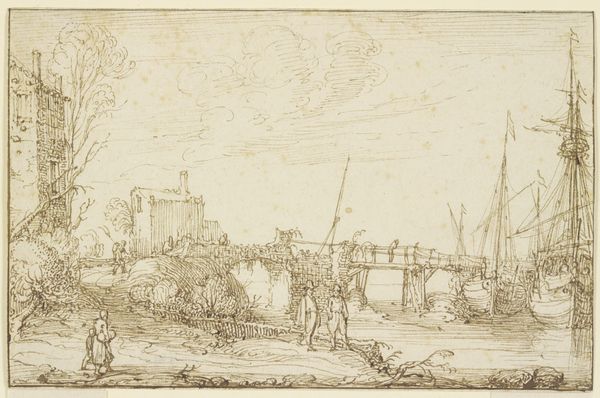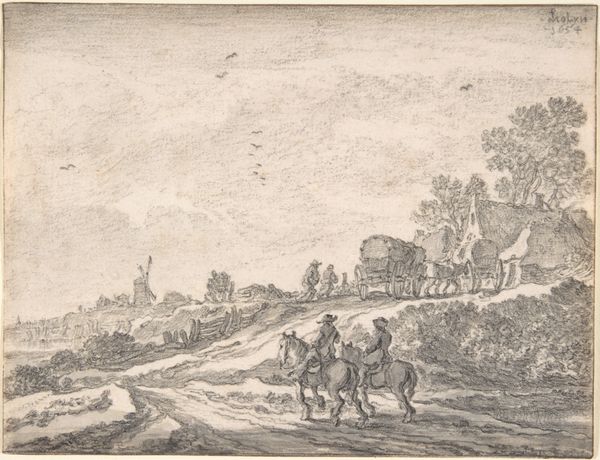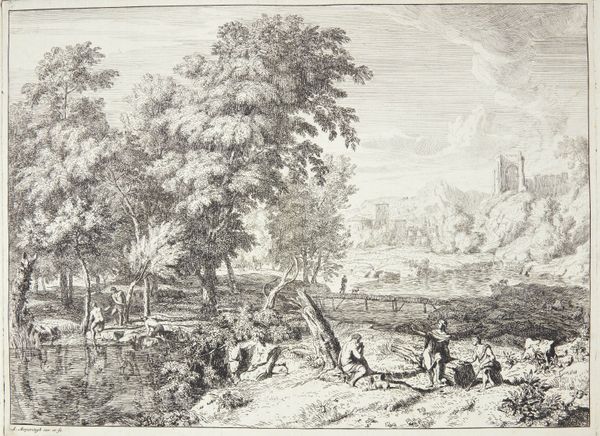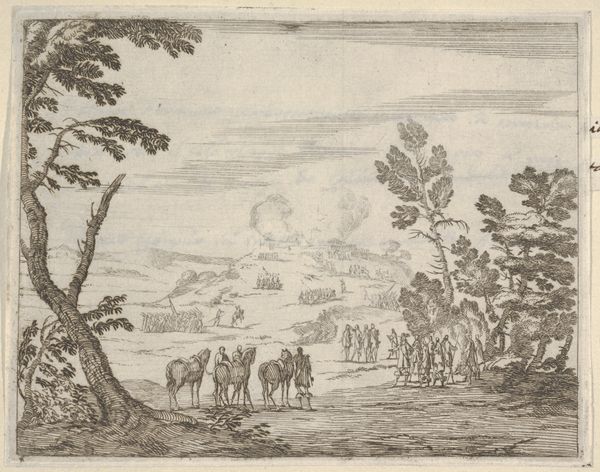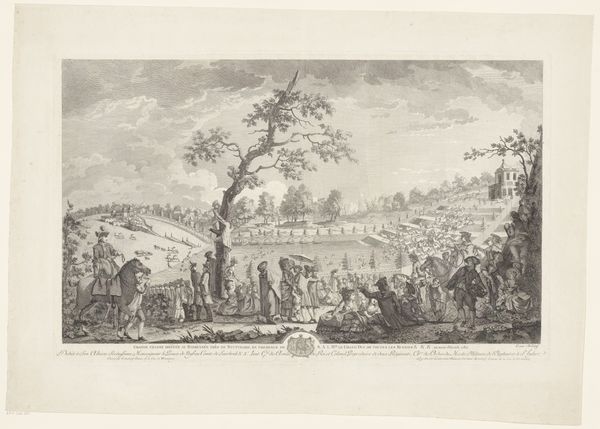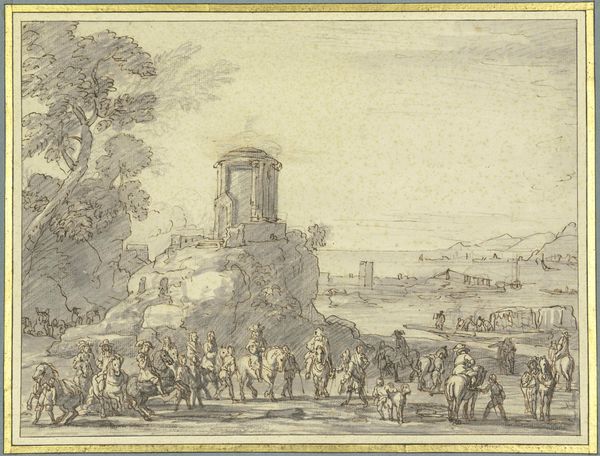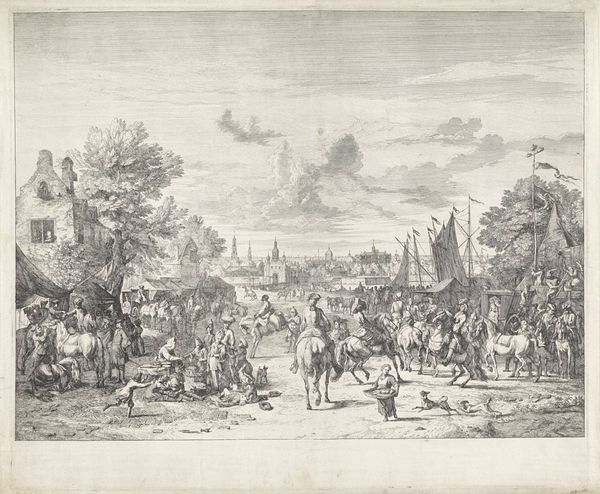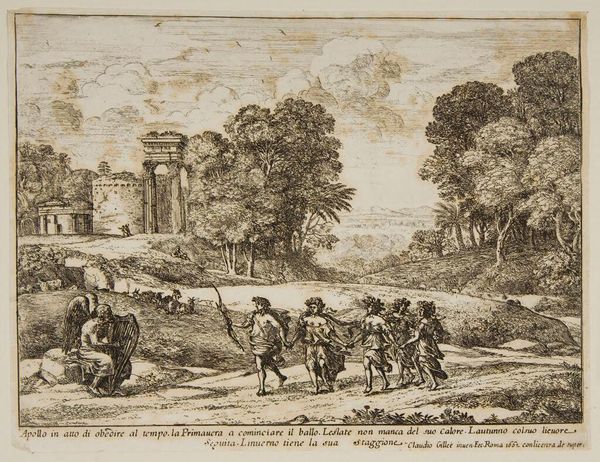
print, etching
#
baroque
# print
#
etching
#
landscape
#
classical-realism
#
etching
#
figuration
#
history-painting
Dimensions: sheet: 7 3/16 x 9 7/8 in. (18.3 x 25.2 cm)
Copyright: Public Domain
Editor: Here we have "Time, Apollo and the Seasons," an etching by Claude Lorrain from 1662. It strikes me as almost dreamlike in its haziness, with delicate figures amidst a sprawling landscape. What do you see in this piece? Curator: I see a reflection of power structures masked within idyllic scenery. Consider Apollo, the sun god, orchestrating time and seasons – symbols of control and order. But who benefits from this ordered world? The elite, those who commission such art, seeking justification for their own power. Lorrain often idealized nature, but this idealization obscures the realities of labor and inequality inherent in the landscapes he portrays. Editor: That’s a very interesting perspective. I was focusing on the harmony of the scene, but now I see how that harmony might be a carefully constructed facade. The figures seem almost subservient to the landscape, but perhaps they are part of this system of control. Curator: Exactly. Look at the landscape itself – it's a romanticized version of the Roman Campagna, but who actually had access to and benefited from that land? Not the peasants toiling in the fields. And why are we so readily accepting this as a natural state instead of questioning the societal conditions which lead to these representations? This challenges us to think critically about whose stories are being told, and whose are being erased within art historical narratives. Editor: This makes me reconsider my initial reading entirely. Thank you for bringing this complex interpretation to light! Curator: And thank you for being open to exploring these often-uncomfortable truths. It's through such dialogues that we can begin to deconstruct the power dynamics embedded within even the most seemingly innocent works of art.
Comments
No comments
Be the first to comment and join the conversation on the ultimate creative platform.

